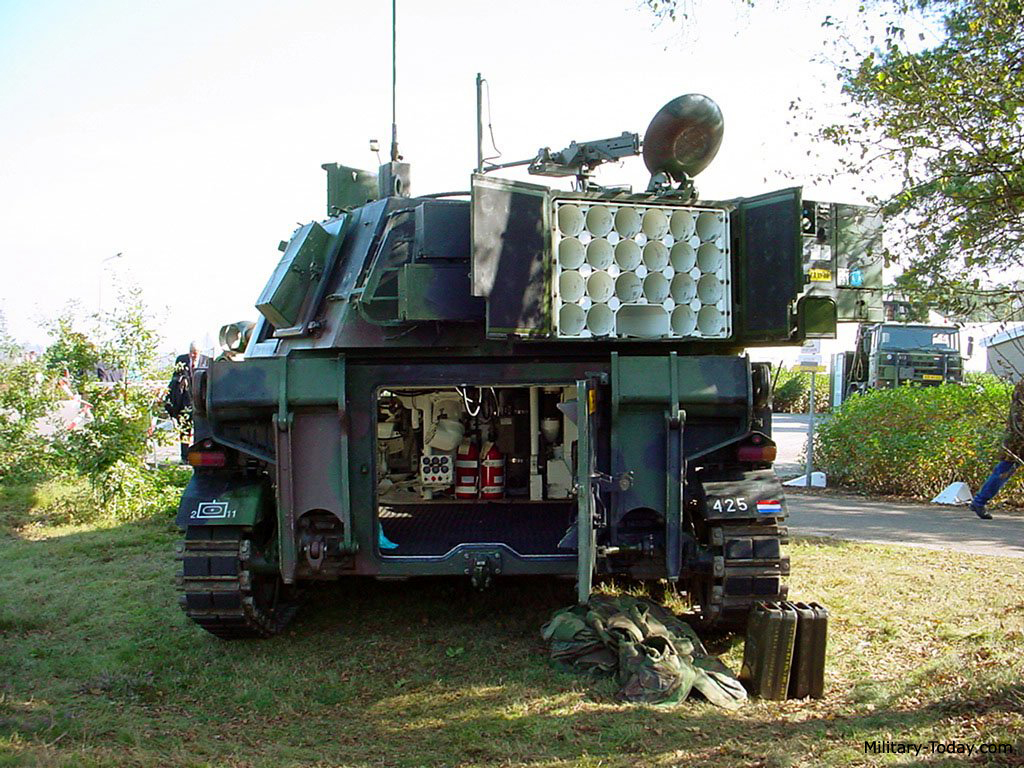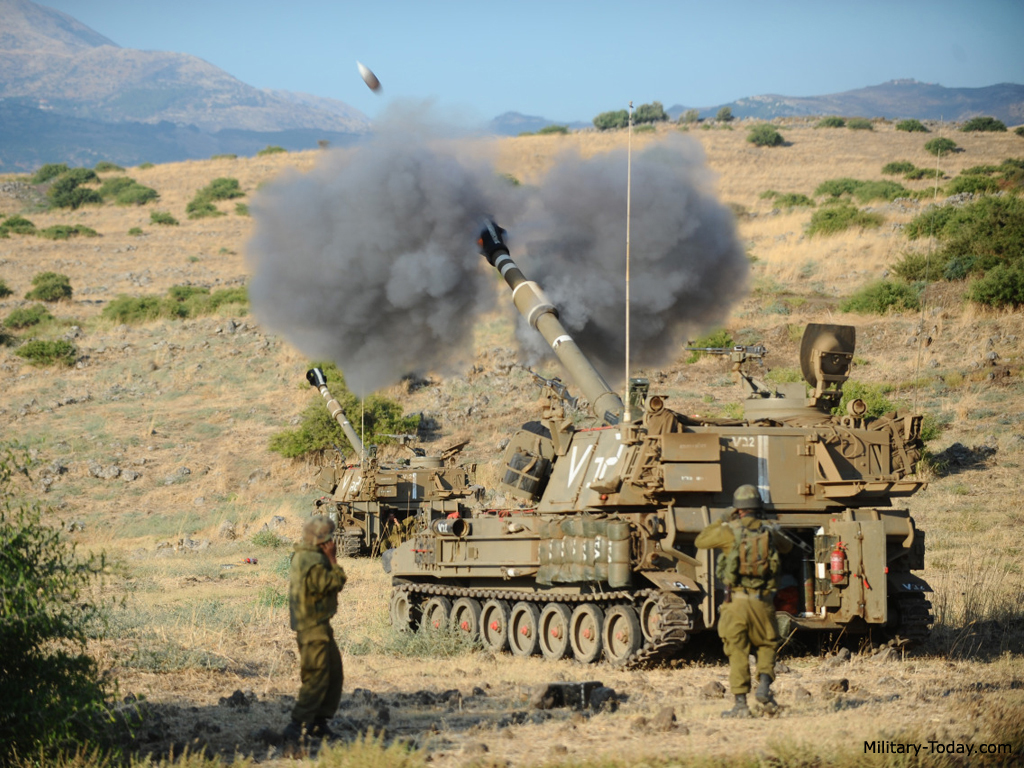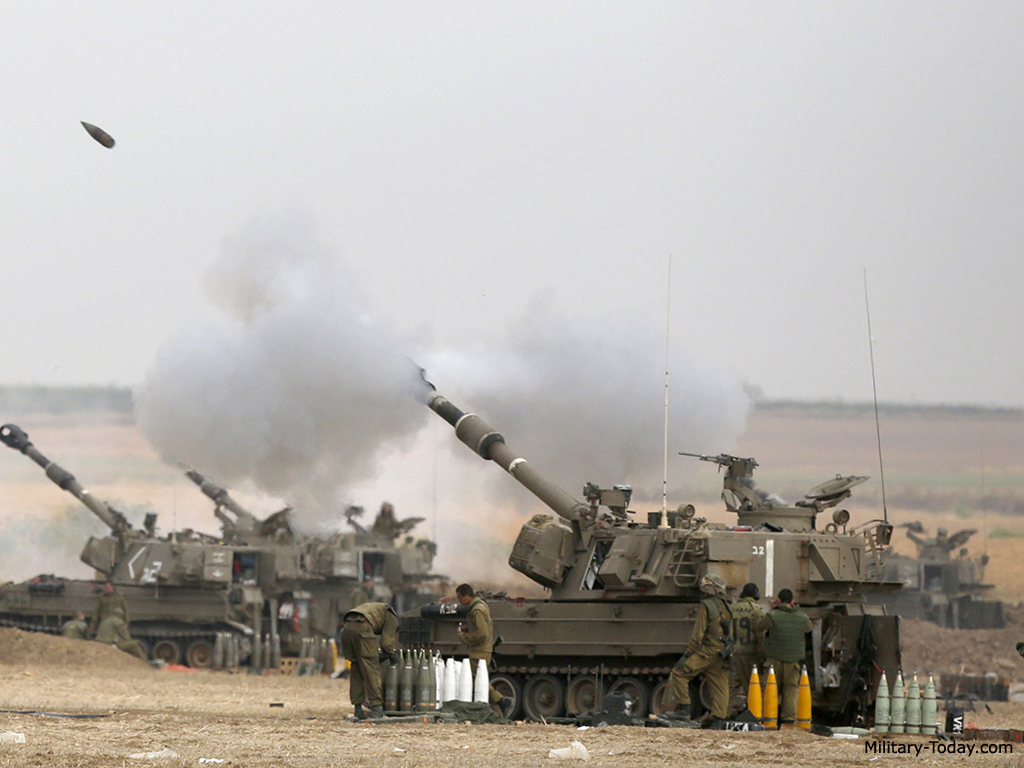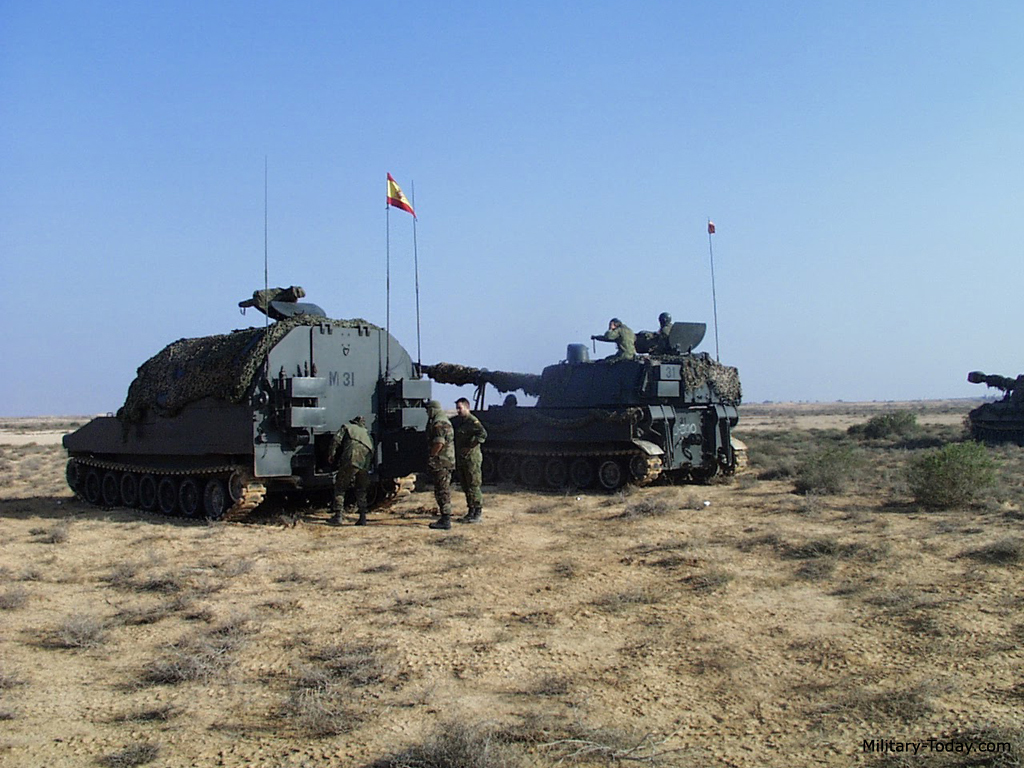Zarvan
ELITE MEMBER

- Joined
- Apr 28, 2011
- Messages
- 54,470
- Reaction score
- 87
- Country
- Location

The M109 proved to be successful and continues to soldier on for over 50 years since its introduction
Country of origin United States
Entered service 1963
Crew 6 men
Dimensions and weight
Weight 24.07 t
Length (gun forward) 9.12 m
Hull length 6.19 m
Width 3.15 m
Height 3.28 m
Armament
Main gun 155 mm
Barrel length 23 calibers
Machine guns 1 x 12.7 mm
Projectile weight 43.54 kg
Maximum firing range 14.6 km
Maximum rate of fire 4 rpm
Sustained rate of fire 2 rpm
Elevation range - 3 to + 75 degrees
Traverse range 360 degrees
Ammunition load
Main gun 28 rounds
Machine guns 500 rounds
Mobility
Engine Detroit Diesel 8V71T diesel
Engine power 450 hp
Maximum road speed 65 km/h
Range 390 km
Maneuverability
Gradient 60%
Side slope 30%
Vertical step 0.53 m
Trench 1.83 m
Fording 1.07 m
The M109 Self-Propelled Howitzer (SPH) is the primary mobile artillery unit in NATO and Western countries. Although gradually being replaced with upgraded versions or completely new designs, the M109 continues to soldier on, as it has for over fifty years, with at least 7 000 units produced.
The M109 was designed in cooperation with the development of the 105 millimeter M108 since the mid 1950s. First prototypes were completed in 1959. The M108 and M109 shared a common chassis (along with the M113 APC), but the M109 was heavier and had a larger gun. The M108 proved unsuccessful, mainly due to its overly light gun. It was adopted in 1962, but its production was stopped in 1963, because NATO countries decided that all land-based self-propelled artillery systems should have a caliber of at least 155 mm . Most of the M108 howitzers were converted to M109. On the other hand the M109 continued to operate and by the 1970s, it had become the standard SPH for NATO.
The M109 has a fairly simple design. The engine is located in the front to the right, while the driver sits in the front-left. The turret takes up the rear. On top of the turret, there is a small cupola, from which the commander operates. This cupola is also fitted with an 12.7 mm (.50)M2HB machine gun.
The M109 is armed with a M126 155 mm/L23 howitzer. The original early production M109 can be easily identified by a short gun. Equipped with 28 rounds of ammunition, this weapon had a maximum range of 14 600 meters with a standard HE-FRAG projectile and around 20 000 meters with a rocket-assisted projectile. Though firing range improved on upgraded version of the M109. This artillery system is capable of firing up to 4 rounds per minute, although a sustained rate of fire would be 2 rounds per minute. This howitzer has a service life of around 7 500 rounds.
Secondary armament consists of the M2HB heavy machine gun with 500 rounds of 12.7 mm ammunition mounted in a cupola on the turret roof.
The M109’s protection consists of up to 32 millimeters of armor, which is only effective against small arms and grenade/artillery fragments.
A 450 horsepower Detroit Diesel 8V71T engine powers the M109 to a maximum speed of 65 kilometers an hour to a maximum range of 390 km. For fording water obstacles this artillery system can be fitted with a floatation kit. On water is is propelled by its tracks. Maximum amphibious speed on water is 6.5 km/h.
The M109 has six crew members. These are the commander, two gunners, two loaders, and a driver.
This self-propelled artillery system is supported by an associated M992 armored ammunition supply vehicle. It is based on the same tracked chassis as the M109.
The M109 artillery system has seen service in numerous countries and in numerous wars. However, in recent years, the M109 has become somewhat dated. Former operators have moved to other options such as the British AS90 or the highly advanced German PzH 2000. With the upcoming M109A7 upgrade, however, this venerable weapon will probably continue to be used for some time.
Variants
M109A1: variant with an improved gun—the M185 155 mm/L39 howitzer. This artillery system was introduced in 1970 and deliveries commenced in 1973. Other improvements include a more efficient muzzle brake, improved load assisting system and improved suspension. Maximum range of fire is 18.1 km with standard HE-FRAG projectile and 24 km with rocket-assisted projectile. IT is also capable of launching M712 Copperhead laser-guided rounds. These rounds are intended to engage high-value hostile targets, such as tanks, armored vehicles, artillery systems, radars, observation posts and so on. Most original M109 artillery systems were upgraded to this standard.
M109A2: slightly improved variant with more space for ammunition (36 instead of 28 rounds) and the new M178 gun mount. Its production commenced in 1978.
M109A3: designation for M109A1s upgraded to M109A2 standard.
M109A4: version with NBC protection (including sealed hatches and air purifiers), improved engine starting capabilities, and heaters for the crew.
M109A5: model with M284 155mm/L39 howitzer, which has a maximum range of 22 km with a standard HE-FRAG projectile and 30 km with rocket-assisted projectile. Ammunition capacity stays the same, however.
M109A5+: upgraded version with improved fire control systems.
M109A6 Paladin: the first majorly improved design of the M109, introduced in 1991. Improvements include more armor, upgraded components, massively enhanced sensors, better communication systems, and a revamped design. The Paladin can also hold 39 rounds (instead of 36) and has a range of 24 kilometers, as well a slightly heavier design.
M109A7: formerly known as the M109A6 PIM (Paladin Integrated Management). Improvements include an automatic loader and an automatic fire control system. Full-scale production is planned to begin in 2017.
PzHb.74, or M109U, is a Swiss model.
M109 “KAWEST”: improved Swiss design. Its primary difference is a Swiss-designed 155 mm/L47 howitzer, with a maximum range of 27 km. It also has more storage (40 rounds), a burst mode (3 rounds in 15 seconds), and improved electronic systems.
M109L52: a joint German-Dutch weapon with the 52 caliber weapon used in the PzH 2000.
M109A3GNM: Norwegian variant.
K55: Korean version with NBC protection, a fire extinguishing system, and other modified modules.
K55A1: improved Korean model with GPS, computers, and a power supply unit.
M109L: Italian model.
M109A3G: German version. Also known as the M109G.
M109AL: Israeli spinoff. Nicknamed the “Doher”.
M109L47: joint UAE and Swiss version, equipped with a 47 caliber main gun.
M992 FAASV (Field Artillery Ammunition Support Vehicle): a turretless, armored ammunition supply vehicle derived from and designed for operating with the M109. It can hold up to 93 rounds and transfers them to the SPH via a conveyor. It is armed with a 12.7 mm machine gun for self-defense.
M109
155 mm Self-Propelled Howitzer

M109
155 mm Self-Propelled Howitzer

M109
155 mm Self-Propelled Howitzer

M109
155 mm Self-Propelled Howitzer
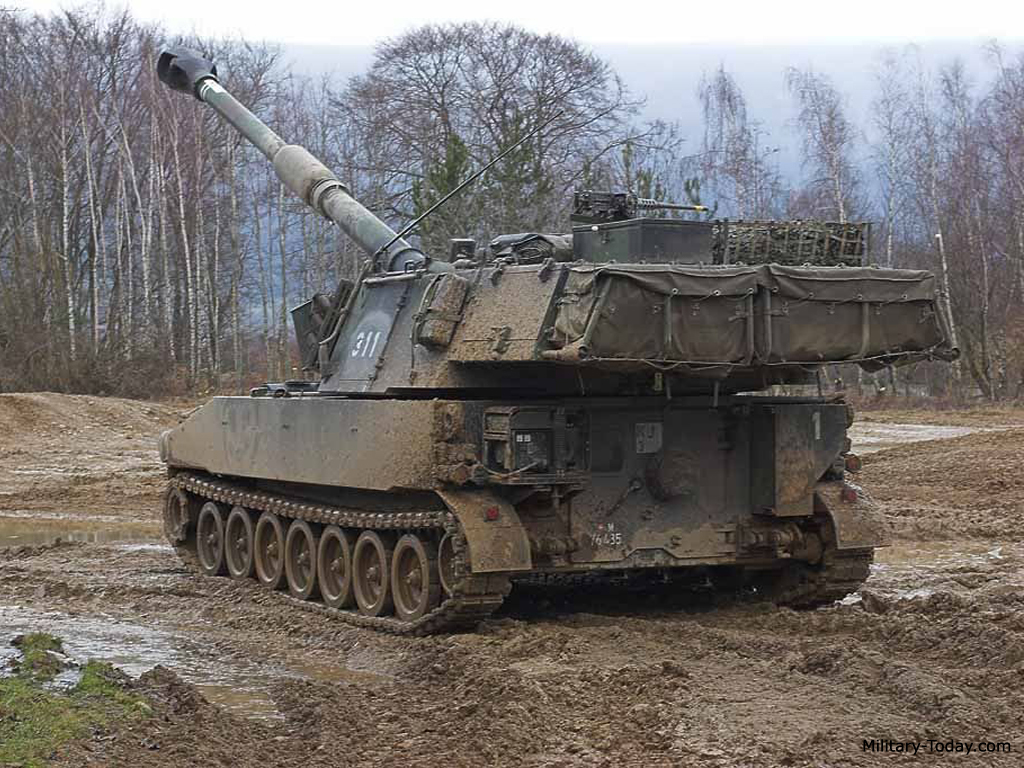
M109
155 mm Self-Propelled Howitzer

M109
155 mm Self-Propelled Howitzer
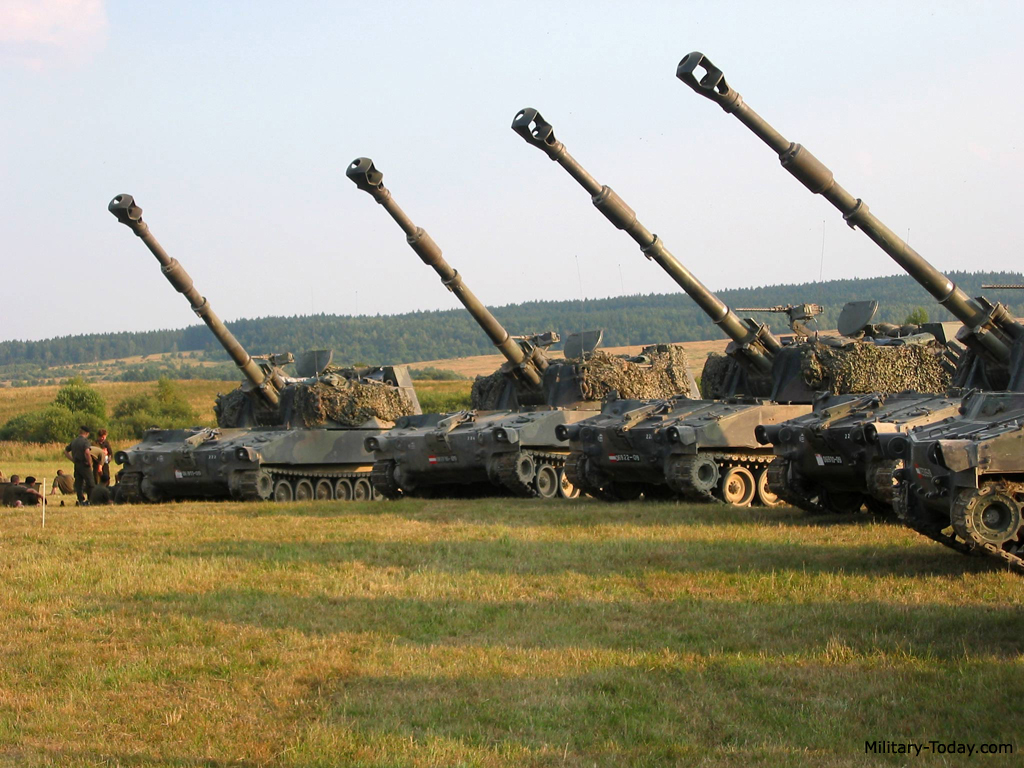
M109
155 mm Self-Propelled Howitzer
